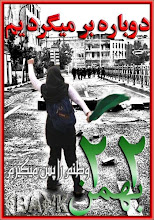

Plagued, first by fire, then by threats of closure and, finally, by tube strikes, Harrow Ceramics marches on undaunted. This was certainly one of the most varied of their degree shows that I’ve seen and easily the most colourful. They’re normally pale shades of grey, all very finely tuned and produced, but ‘clay colours’ nonetheless. Not so this one. Now then, a monumental hats off to Chris Sutherland for a rare example of astounding virtuosity that also managed to be interesting – I know, you wouldn’t think it possible, but it is. As per the previous post, I am normally bored to death by virtuoso displays, but this was actually enticing. Weird great big dead baby birds, the size of three year old children, (and that’s the point), were draped over plinths and slumped in corners. I didn’t exactly feel for them, partly because I was distracted by the glazes, but most people, presumably, wouldn’t be. They’re funny looking cartoon characters, exactly the sort of thing you’d expect find in computer game graphics, or vinyl LP-cover artwork, only these were 3-d and ceramic. Weird, as I said.
There were two or three installationy-type displays, some more interactive than others and an assortment of standard ceramics degree show fare- but all of it several notches above the ‘standard,’ I’d say. Geraldine Williams produced wonderful ‘whore’s handbag,’ Victorian-looking peep show comprising a big, red, fake-crushed-velvet-covered box with peep hole and when you were sitting peeping through said hole, the whiff of the velvet was almost nauseating. I’ve never been in such a booth, but I have to say, I’ve got a good idea of just how grotesque it might be now. It also did very very weird things to my sense of gender-assignment – which is a fancy way of saying I felt like a bloke. I’d just been reading an account, in ‘Whores and Other Feminists,’ by a woman who was a peep-show performer. The book is a bizarrely and ferociously American, obsessive wail about Feminism and the sex industry, but fascinating even so. Anyway, Geraldine’s work tuned right in and for a moment, I was the teenage boy jerking off over something that looked like a twirling Christmas decoration / pretty ceramic figurine in magic box. Brilliantly fetishistic and provocative but in a not too serious way – which was a relief and which makes it a big improvement on the book. There were some laughs in the red box– as there were in the rest of her work.
And from whores to horses, Hiromi Nakajima’s smoke fired animals also belong to a standard category in degree show production, but these were anything but standard. ‘Working with animals makes me happy,’ she says in what must be one of the most straight forward artists statements I’ve ever read. Her glorious beasts writhed and giggled and stretched and snuffled and the smiling horses – oh the smiling horses – sniffing clover – she’d made them a paddock with real grass and clover and they screwed up their eyes and, somehow you just know, that when the lights are out, they start galloping about.
There’s lots more and it’s all good, and excellent pictures can be seen here.























































